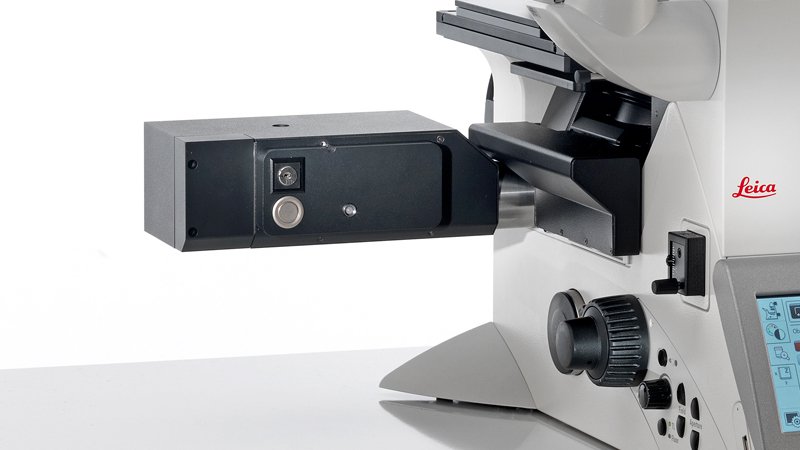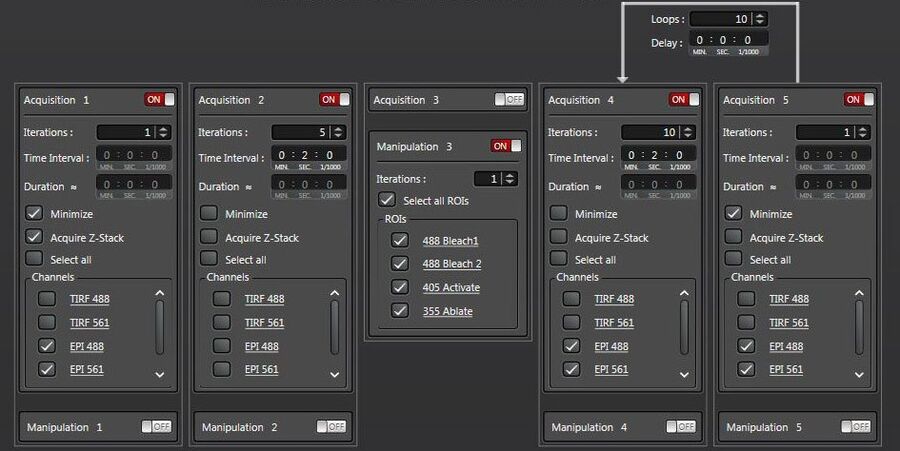Photomanipulation
The term photomanipulation encompasses a range of techniques that utilize the properties of fluorescent molecules to initiate events and observe how dynamic complexes behave over time in living cells.
Whether bleaching, activating, converting, ablating or combining techniques, researchers need to have a system fully capable of performing and capturing events in high resolution.
Want to know more on our solutions for Photomanipulation?

Fluorescence Recovery After Photobleaching (FRAP)
Fluorescence Recovery After Photobleaching (FRAP) experiments require fast yet gentle and accurate bleaching of specific regions of interest (ROIs).
FRAP experiments typically are used in biological studies of cellular kinetics, such as membrane diffusion and protein binding.
Leica offers two solutions for FRAP experiments with the DMi8 inverted microscope
- The WF FRAP module is a budget-friendly entry level FRAP all-in-one device.
- For more advanced applications, use the Infinity Scanner module to perform multi-ROI high-speed photobleaching experiments.
Activating
Utilize the latest advances in photoswitchable fluorescent proteins.
By selectively activating regions of your cells, you can precisely follow how specific molecules behave in cells over time.
The Infinity Scanner gives you full flexibility to choose the wavelength, size, and shape of your activation regions.
Full integration into LAS X microscope software
With full integration into LAS X software, you can design and perform photoactivation experiments with the ease of a fully integrated system.

Cutting/Ablation
Perform laser ablation experiments by adding the Pulsed Laser Unit to the Infinity Scanner.
Ablation experiments require high power, precise cuts to specific structures, such as microtubules, or regions of cells in order to gain insights into structural and developmental processes.
Optogenetics
Using light to stimulate conformational changes to proteins, optogenetic techniques offer researchers the ability to control specific changes in living cells and tissues. The versatile Infinity Scanner offers user the ability to perform optogenetics experiments, and to combine with additional photomanipulation techniques into one experiment.
Photomanipulation with DMi8 S: Flexible live cell imaging
The Leica DMi8 S microscopy system lets you easily combine applications by adding 1 or more advanced fluorescence imaging modules, such as the Infinity Scanner and Infinity TIRF. Get unprecedented flexibility allowing you to expose your sample to multiple techniques simultaneously, giving you deeper insights into your cells.
The Infinity Scanner enables a host of photomanipulation techniques, like FRAP, FLIP, photo activation as well as photo switching, optogenetics and ablation. Advance your research by combining several photo manipulation modes in one experiment, e.g. apply photo damage to the nucleus to induce DNA damage. Then use photo switching to identify and track when repair proteins are released from the DNA. Setting up and running experiments is straightforward, allowing you to see the hidden to advance your discoveries.

